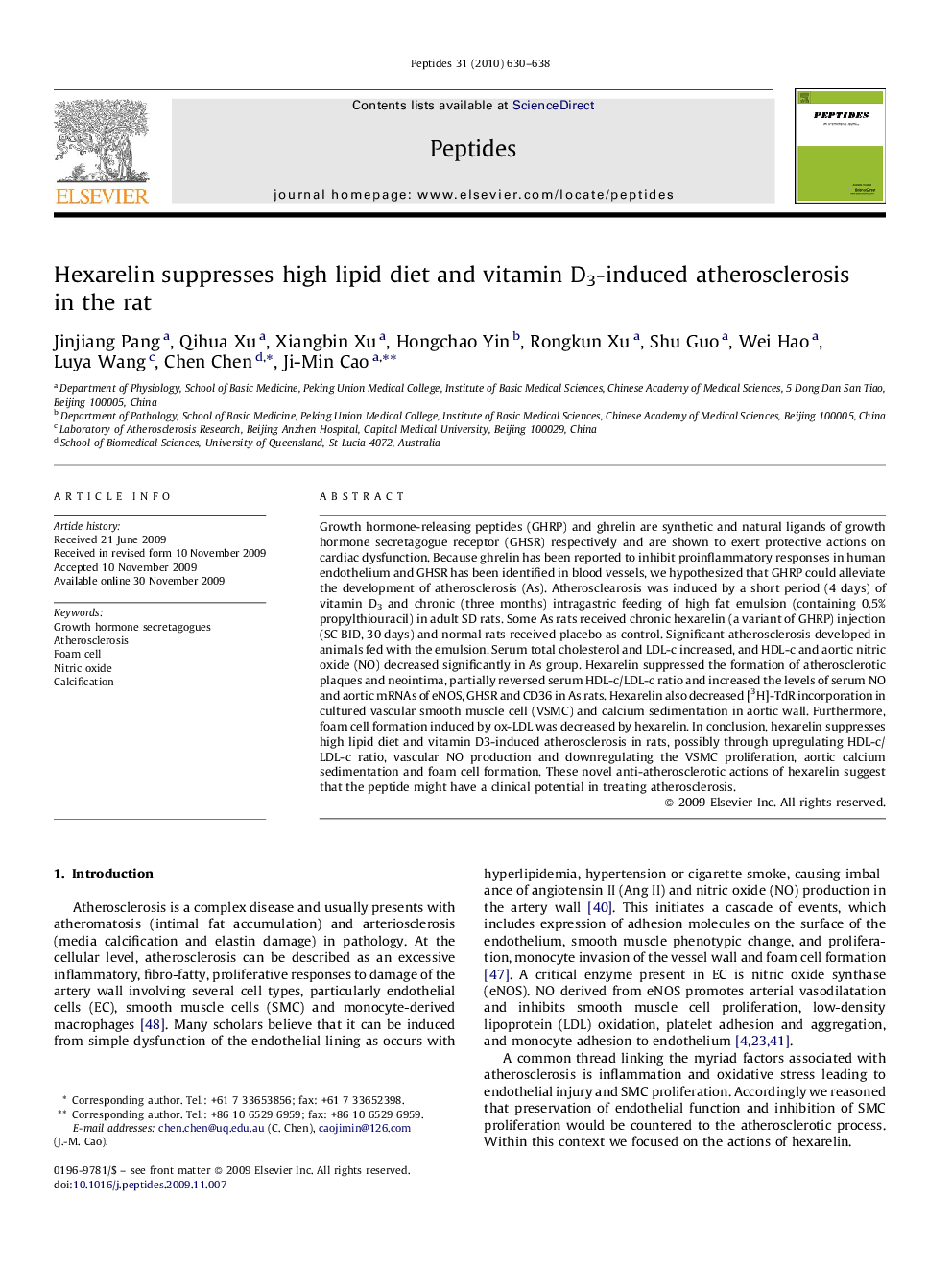| کد مقاله | کد نشریه | سال انتشار | مقاله انگلیسی | نسخه تمام متن |
|---|---|---|---|---|
| 2006888 | 1066357 | 2010 | 9 صفحه PDF | دانلود رایگان |

Growth hormone-releasing peptides (GHRP) and ghrelin are synthetic and natural ligands of growth hormone secretagogue receptor (GHSR) respectively and are shown to exert protective actions on cardiac dysfunction. Because ghrelin has been reported to inhibit proinflammatory responses in human endothelium and GHSR has been identified in blood vessels, we hypothesized that GHRP could alleviate the development of atherosclerosis (As). Atherosclearosis was induced by a short period (4 days) of vitamin D3 and chronic (three months) intragastric feeding of high fat emulsion (containing 0.5% propylthiouracil) in adult SD rats. Some As rats received chronic hexarelin (a variant of GHRP) injection (SC BID, 30 days) and normal rats received placebo as control. Significant atherosclerosis developed in animals fed with the emulsion. Serum total cholesterol and LDL-c increased, and HDL-c and aortic nitric oxide (NO) decreased significantly in As group. Hexarelin suppressed the formation of atherosclerotic plaques and neointima, partially reversed serum HDL-c/LDL-c ratio and increased the levels of serum NO and aortic mRNAs of eNOS, GHSR and CD36 in As rats. Hexarelin also decreased [3H]-TdR incorporation in cultured vascular smooth muscle cell (VSMC) and calcium sedimentation in aortic wall. Furthermore, foam cell formation induced by ox-LDL was decreased by hexarelin. In conclusion, hexarelin suppresses high lipid diet and vitamin D3-induced atherosclerosis in rats, possibly through upregulating HDL-c/LDL-c ratio, vascular NO production and downregulating the VSMC proliferation, aortic calcium sedimentation and foam cell formation. These novel anti-atherosclerotic actions of hexarelin suggest that the peptide might have a clinical potential in treating atherosclerosis.
Journal: Peptides - Volume 31, Issue 4, April 2010, Pages 630–638